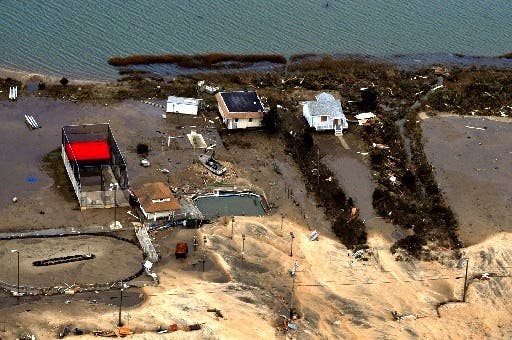A recent U.S. study shows how the upward trend in economic damage from hurricanes correlates very closely to the influence global warming has on the number and intensity of hurricanes. Published in Nature Geoscience, it concludes that the commonly cited reasons for growing hurricane damage — increases in vulnerability, value, and exposure of property — don’t stand up very well to scrutiny.

Image via livescience
Over the past decades we’ve seen a rise in economic losses and loss of life from natural disasters, in particular hurricanes. However, there has always been a tendency to pin the blame on socioeconomic factors, such as increases in wealth and population in coastal regions or an unusually high number of extreme weather events.
Wanting to get to the bottom of it all, Francisco Estrada and co-authors used a statistical system that minimized the risk of introducing artificial trends to analyze the economic losses caused by hurricanes in the U.S from 1990 to 2005. And part of the rising trend can’t be explained by other factors than the increase in number and intensity of property-damaging hurricanes hitting the country — an increase fueled by warmer climate
The authors estimate that $2-14 billion (2-12 percent of total) of U.S. hurricane losses incurred in 2005 may be attributable to climate change.
“We should not be worried about the frequency of hurricanes; we should be worried about the frequency of intense hurricanes,” said Kerry Emanuel, professor of atmospheric science at the Massachusetts Institute of Technology, not part of the study. “Climate change is causing a greater number of intense storms. The total number of storms has remained constant, but the proportion of high-intensity events has gone steadily upward in most parts of the world. Scientific models and real-world observations both suggest that the frequency of intense storms is going up,” he added.






